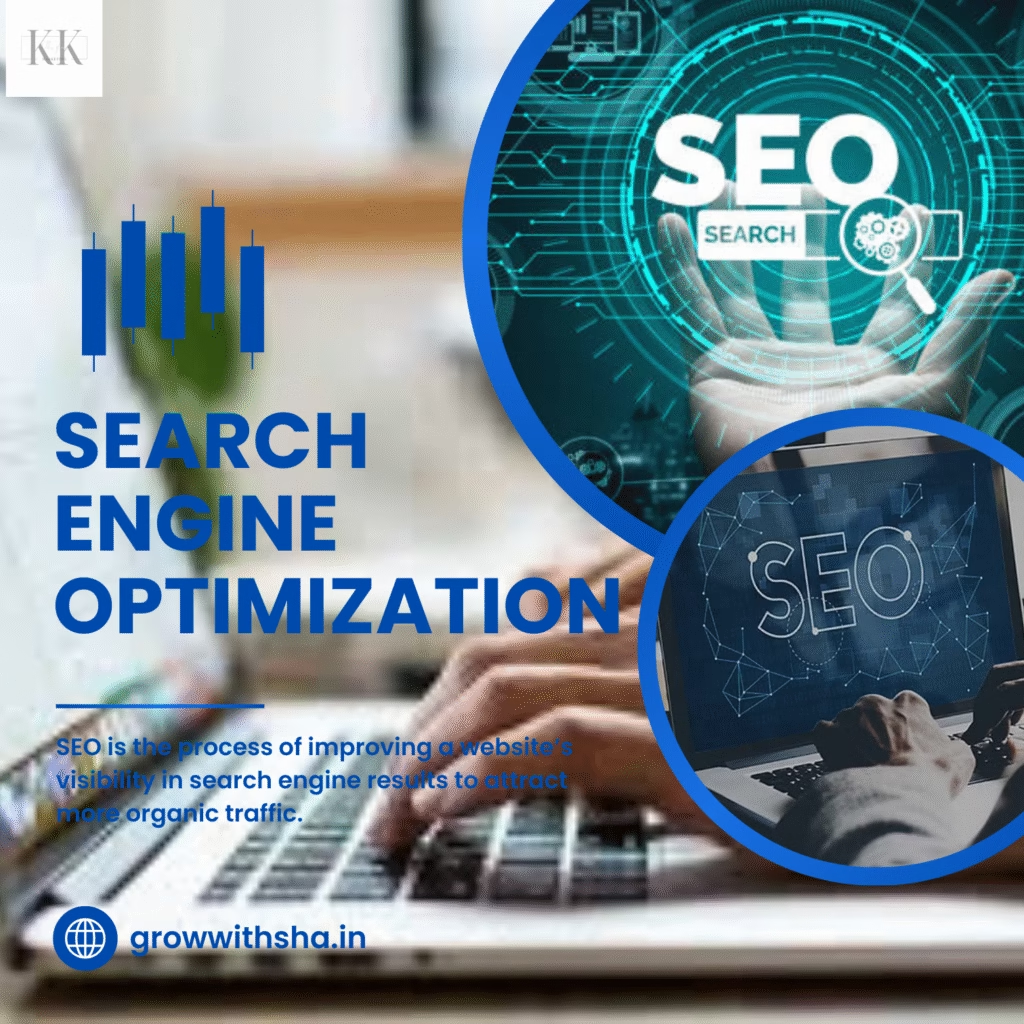The collection of tactics and methods used to improve a website’s exposure in search engine results is known as search engine optimisation, or SEO. The ultimate goal of SEO is to improve rankings, drive organic traffic, and enhance the user experience. By optimizing websites to meet search engine guidelines, SEO ensures that they can be easily discovered by search engines and stand out to potential visitors.
In a digital age where billions of searches are made every day, the need for effective SEO has never been more apparent. Whether you’re running an individual blog, an e-commerce store, or a corporate website, applying SEO best practices can significantly improve your online presence. It’s about more than just optimizing a website for search engines; it’s about making it an effective tool to engage and convert your target audience.
Technical know-how, content tactics, and marketing expertise are all combined in SEO. This combination is designed to secure better rankings in search engines, increase traffic, and ultimately foster growth through organic means. As search algorithms evolve, SEO remains a dynamic and vital part of any digital marketing strategy.
Importance of SEO for Websites
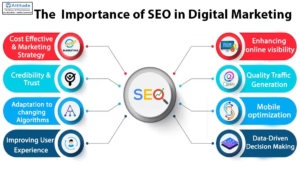
SEO is indispensable for any website aiming to rank well and draw attention in a crowded digital space. Search engines, particularly Google, act as gatekeepers, determining which content will be shown to users based on their search queries. If your website doesn’t show up on the first page, you may be missing out on significant traffic and business opportunities.
The importance of SEO lies in its ability to build organic traffic. SEO has a longer-lasting effect than paid advertising, which loses visibility as soon as the campaign is over. Over time, a well-optimized website keeps attracting visitors without incurring further expenses. By strategically optimizing your site, you’re not just getting traffic – you’re attracting the right kind of audience, people genuinely interested in your services or products.
SEO helps enhance user experience by providing relevant, high-quality content that matches what users are searching for. Better conversion rates, higher ranks, and greater trustworthiness are the outcomes of this. This is a crucial component of a long-term, cost-effective marketing plan for companies.
Types of SEO
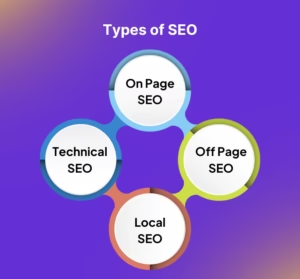
To craft a well-rounded SEO strategy, it’s important to understand the three core types of SEO: On-page, Off-page, and Technical.
- On-Page SEO
On-page SEO involves all the actions taken within your website to enhance its search visibility. This involves fine-tuning your website’s content, visuals, metadata, heading tags, and internal link structure for better search engine visibility and user experience.
The primary objective is to make your website’s information easily accessible, understandable, and indexable by search engines. A well-executed on-page SEO strategy can greatly enhance your site’s relevance and ranking in search engine results pages (SERPs).
Optimizing your title tags, using keywords naturally, and ensuring proper content hierarchy can improve both user experience and search engine rankings. Every webpage on your site should be optimized for SEO by implementing structured data, using schema markup, and ensuring mobile-friendliness.
- Off-Page SEO
Off-page SEO targets elements beyond your website that contribute to its reputation and domain authority. One of the most critical aspects is backlink acquisition—earning links from authoritative external websites that direct traffic to your own. These backlinks serve as endorsements, signalling to search engines that your content is trustworthy and of high value.
Furthermore, off-page SEO is strengthened through brand references across the web and active engagement on social media platforms, which help establish credibility and widen your digital footprint. A website with a strong external presence, evidenced by mentions and links from other reputable websites, is seen as more authoritative and is therefore more likely to rank well.
- Technical SEO
Technical SEO deals with the backend of your website, making sure that it’s optimized for search engines and users alike. This includes improving site speed, ensuring your site is mobile-friendly, fixing broken links, and making sure search engines can crawl and index your pages easily. An efficiently structured technical foundation allows search engines to seamlessly interpret, crawl, and rank your website’s content with greater accuracy.
Investing in technical SEO means setting up your site to be as efficient and user-friendly as possible. This is especially important for large websites or e-commerce stores that need to scale efficiently while still providing an excellent user experience.
- Local SEO
Local SEO is a powerful digital marketing strategy designed to enhance your business’s visibility in location-specific search results. By optimizing your online presence for local searches, you make it easier for nearby customers to discover and engage with your services.
This approach involves tailoring your website and online profiles to reflect your geographic location, ensuring that search engines can accurately connect your business with local search queries. For instance, incorporating your city or neighbourhood into your website content and metadata can significantly improve your chances of appearing in local search results.
Keyword Research
Performing keyword research establishes the critical foundation needed to develop a strong and effective SEO strategy. It entails figuring out what search terms prospective customers are using into search engines. You may adjust your material to your audience’s needs by being aware of these search behaviours.
Effective keyword research requires using tools like Google Keyword Planner, Ahrefs, or SEMrush to identify high-traffic and low-competition keywords. These keywords should be organized into primary and secondary groups to streamline content targeting and optimization. Primary keywords should be used for core themes, while secondary keywords should be used for supporting content.
Long-tail keywords are especially valuable because they tend to be more specific and face less competition compared to short-tail keywords. For example, targeting a keyword like “best waterproof running shoes for men” will attract highly targeted traffic and is more likely to convert visitors into customers.
A good keyword research strategy includes regularly reviewing and updating your keyword list to ensure you stay ahead of search trends and adjust for seasonality or shifts in consumer behaviour.
On-Page Optimization Techniques

On-page optimization involves the targeted steps you can implement on individual web pages to enhance their ranking in search engine results. Below are some essential factors to concentrate on:
- Title Tags: Keep title tags concise (under 60 characters) and include primary keywords that align with the page’s content.
- Meta Descriptions: Write compelling and succinct descriptions (under 160 characters) to encourage users to click on your link.
- Header Tags: Structure your content efficiently by using H1, H2, and H3 tags. This creates a clear organization, making it easier for both users and search engines to understand and navigate your content.
- URL Structure: Ensure your URLs are concise, meaningful, and include relevant keywords. Because lengthy, complicated URLs can deceive both search engines and visitors, try to keep things simple.
- Image Optimization: Provide clear and relevant ALT tags for each image, enhancing accessibility and helping search engines understand the content of your visuals.
- Long-tail keywords are highly effective as they are more targeted and generally face lower competition than short-tail keywords.
- By consistently optimizing your pages, you improve the relevance and readability of your content, which results in higher rankings and better user engagement.
Content Strategy and SEO
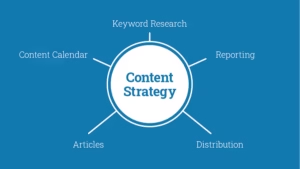
Content is the backbone of SEO, but only when it is created with both users and search engines in mind. Your content should aim to satisfy user intent by answering their questions, solving their problems, or providing them with the information they are seeking.
Create original, high-quality content that is structured well and easy to read. It should be informative, valuable, and tailored to the specific needs of your audience. The use of multimedia, such as images, videos, infographics, and charts, will help keep users engaged and enrich the content experience.
Content doesn’t have a shelf life; it can continue to drive traffic as long as it is kept current and accurate. Consistency is key to a successful content strategy. Create a content calendar and consistently produce fresh content to improve your website’s relevance and authority.
Link Building Strategies
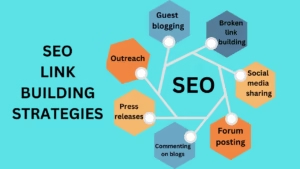
Backlinks continue to be a crucial part of SEO rankings. Earning links from trusted websites within your industry can boost your site’s authority and enhance its search rankings. Here are some link-building strategies:
- Guest Posting: Writing high-quality articles for authoritative websites in your niche is a great way to acquire backlinks.
- Broken Link Building: To obtain a valuable backlink, identify broken links on related websites and provide your content as a substitute.
- Skyscraper Technique: Create content that is better and more comprehensive than what’s already ranking. After that, ask anyone who are linked to the original content to link to your updated version.
- Directory Submissions: To improve visibility and obtain backlinks, submit your company to respectable internet directories.
- Social Sharing: Promote your content on social media to increase its reach and likelihood of earning backlinks.
- Put your backlinks’ quality above their quantity: any low-quality links can be significantly less helpful than a few high-authority ones.
Local SEO
For companies looking to interact with clients in certain regions, local SEO is crucial. By optimizing for local search terms and maintaining accurate business listings, companies can enhance their visibility in local search results, making it easier for nearby customers to discover and choose their services. With local search queries increasing, optimizing for local SEO can lead to higher visibility in local search results and on Google Maps.
Key tactics for local SEO include:
- Google Business Profile (GBP): Enhance your Google Business Profile by providing accurate business information, uploading photos, and encouraging customer reviews.
- Local Citations: Maintain consistent business name, address, and phone number (NAP) across all online platforms to enhance local SEO and build customer trust.
- Location-Based Keywords: Use keywords that include your city, neighborhood, or region to target local customers.
- Customer Reviews: Positive reviews enhance your business’s credibility and can improve its visibility in local search results. Your company’s internet visibility can be greatly improved by encouraging happy clients to post reviews on sites like Facebook, Yelp, and Google.
For businesses with physical locations, local SEO can drive foot traffic and connect you with people in your immediate area looking for your products or services.
Mobile and Voice Search Optimization

With mobile traffic accounting for a significant portion of internet usage, optimizing your website for mobile is more important than ever. Making sure your website is mobile-friendly is essential to providing a smooth user experience. Mobile optimization entails designing and formatting your website to ensure it is easily readable, navigable, and interactive on smaller screens, such as smartphones and tablets. Ensure your website is mobile-friendly by implementing responsive design, optimizing load times, and creating touch-friendly interfaces. By doing so, you enhance user satisfaction, reduce bounce rates, and improve your site’s visibility in search engine rankings .
Key considerations for mobile SEO include:
- Responsive Design: Ensure your website adapts to different screen sizes, providing a consistent experience on smartphones, tablets, and desktops.
- Page Speed: Mobile users expect fast-loading pages. Use tools like Google PageSpeed Insights to evaluate and improve the speed of your page.
- Voice Search Optimisation: Voice search is becoming more and more popular as virtual assistants like Siri and Alexa gain traction. Make sure your content is optimised for long-tail and natural language queries to draw in voice search traffic.
As mobile-first indexing becomes more widespread, ensuring that your website is optimized for mobile is critical to maintaining high rankings.
SEO Tools and Analytics
SEO tools and analytics are crucial for monitoring, measuring, and optimizing digital marketing efforts. These tools help marketers track website performance, identify keyword opportunities, and analyse user behaviour to refine strategies. Popular SEO tools like Google Analytics, SEMrush, Ahrefs, and Moz provide in-depth insights into site traffic, backlinks, keyword rankings, and competitor performance. With real-time data, SEO tools also enable continuous optimization, ensuring businesses stay ahead in the ever-evolving digital landscape.
To effectively implement and measure your SEO efforts, you’ll need the right set of tools. Some popular SEO tools include:
- Google Search Console: Provides insights into how Google indexes your website, helping you identify issues like crawl errors and keyword performance.
- Google Analytics: Tracks website traffic, user behaviour, and conversions, giving you a comprehensive understanding of how visitors interact with your site.
- Strong keyword research, backlink analysis, and competitor tracking features are provided by Ahrefs and SEMrush.
- Yoast SEO: A plugin for WordPress that helps you manage on-page SEO elements, like titles, meta descriptions, and XML sitemaps.
- Screaming Frog: A website crawler that helps identify technical SEO issues, such as broken links and missing metadata.
You can make data-driven decisions that gradually enhance your SEO approach by using SEO tools.
Common SEO Mistakes to Avoid
While SEO is a valuable tool for driving organic traffic, many mistakes can hinder your efforts. Here are some common pitfalls to avoid:
- Keyword Stuffing: Overusing keywords in your content can negatively impact readability and may lead to search engine penalties.
- Duplicate Content: Always create unique content to avoid penalties from search engines for copying other sites’ material.
- Ignoring Mobile Optimization: Your rankings may suffer and users may leave your site if it is not mobile-friendly.
- Poor Site Structure: A confusing or cluttered site structure can make it harder for search engines to crawl your pages.
- Neglecting Technical SEO: Poor crawlability, broken links, and slow site speed can lower search ranks and negatively impact user experience.
- Regular audits and staying informed about SEO best practices can help you avoid these mistakes and keep your rankings high.
Future Trends in SEO

Success in the constantly evolving field of SEO requires staying abreast of the most recent trends. Below the Emerging Trends to Watch:
AI and Machine Learning: Search engines are increasingly integrating artificial intelligence and machine learning to better interpret user intent and the context of content. This evolution is reshaping how search results are generated and presented, with AI-driven features offering more direct and conversational responses to user queries. As a result, businesses and marketers are adapting their strategies to align with these advancements, ensuring their content remains visible and relevant in an evolving digital landscape.
- Search Generative Experience (SGE): The way content is presented and sorted may be revolutionised by Google’s AI-powered search results.
- Video SEO: As video content continues to grow in popularity, optimizing for platforms like YouTube is becoming more important.
- E-A-T (Expertise, Authoritativeness, Trustworthiness): Google is placing more emphasis on these factors, especially for YMYL (Your Money Your Life) content.
- Zero-Click Searches: Optimize for featured snippets and knowledge panels to gain visibility without users having to click on your site.
- Being proactive in adapting to these changes ensures that your website stays competitive and relevant in the ever-changing SEO landscape.
Conclusion and Final Tips
SEO is a sustained effort that calls for planning, perseverance, and constant tweaking. Remember, SEO is not a set-it-and-forget-it strategy. It requires constant monitoring, testing, and optimization. Keep an eye on industry changes, experiment with new techniques, and always prioritize the needs of your users. SEO is not just about rankings; it’s about building a meaningful relationship with your audience.
Author: Shafna K. K.

